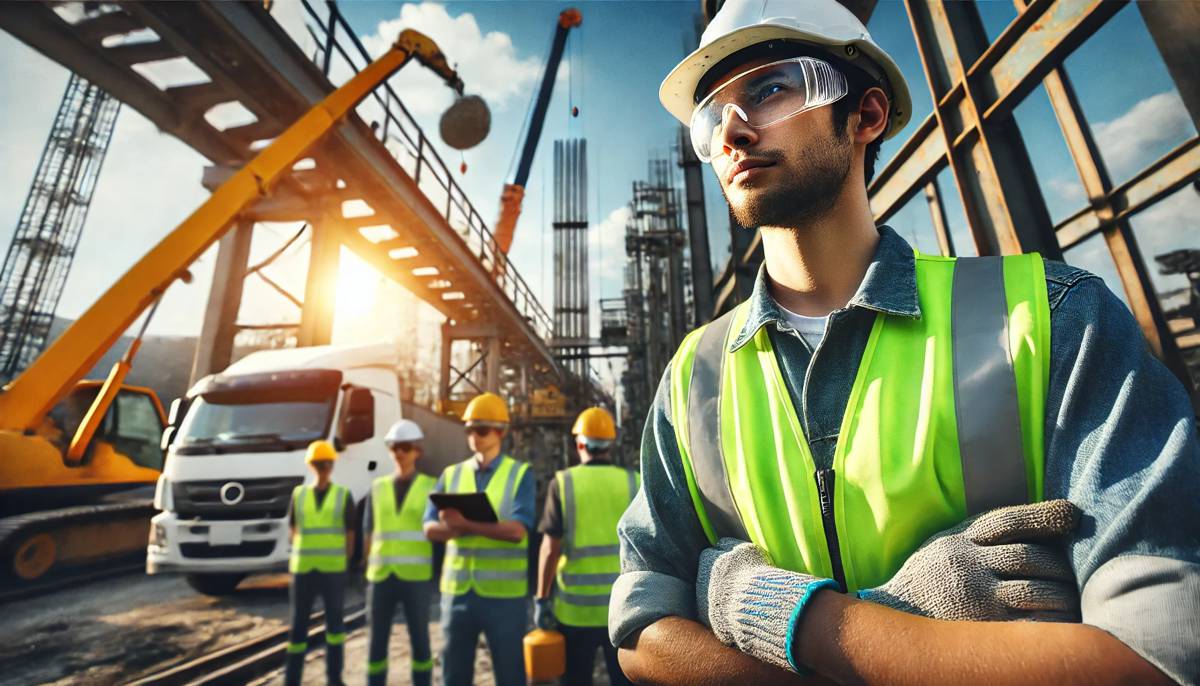The Ultimate Guide to Safety Eyewear for the Construction Industry
Construction Safety Month at Highways Today offers a vital chance to put the spotlight on safety eyewear—a critical yet frequently overlooked element of personal protective equipment (PPE).
With thousands of preventable eye injuries occurring every year, the importance of this protective gear cannot be overstated. Workers in the construction industry face numerous risks, including exposure to flying debris, harmful chemicals, and harsh environmental conditions. Without the right protection, these hazards can lead to severe injuries or even permanent vision loss.
Safety eyewear is much more than just a regulatory requirement; it’s a cornerstone of workplace safety that safeguards one of our most precious senses. From understanding the array of protective options available to recognising the advancements in technology that enhance both safety and comfort, there’s a wealth of knowledge to unpack. Additionally, the role of certifications and standards cannot be underestimated, as they ensure the eyewear meets the rigorous demands of various industrial settings. Beyond compliance, fostering a culture of safety and educating workers about proper usage and maintenance can significantly reduce eye-related incidents.
Let’s delve into the essential types of safety eyewear, explore their applications, examine the standards they must meet, and highlight emerging innovations that make modern options more effective and user-friendly. By doing so, we aim to equip both employers and workers with the knowledge they need to protect their vision and promote a safer working environment.
Why Eye Safety Matters in Construction
The construction industry poses a myriad of hazards that can compromise eye health, ranging from flying debris to chemical splashes and environmental challenges. These dangers make safety eyewear indispensable. Astonishingly, nearly 90% of workplace eye injuries could be prevented with the proper use of protective eyewear, underscoring the need for greater awareness and adherence to safety protocols. Yet, despite this compelling statistic, misconceptions about the necessity and efficacy of safety eyewear persist, leaving many workers vulnerable.
- Physical Hazards: Flying particles, such as wood chips, metal fragments, and cement dust, are frequent culprits in eye injuries. These materials can travel at high speeds, causing anything from minor irritations to severe corneal damage or vision loss.
- Chemical Risks: The risks extend to chemical splashes from solvents, paints, or industrial cleaners. Such substances can result in burns, irritation, or long-term damage, making tightly sealed protective goggles essential for workers handling hazardous materials.
- Environmental Factors: For outdoor construction workers, exposure to ultraviolet (UV) rays, wind, glare, and airborne particles adds another layer of risk. Over time, prolonged UV exposure can lead to cataracts or other vision issues, while glare may impair visibility, increasing the likelihood of accidents.
By prioritising high-quality, task-specific safety eyewear, organisations can significantly reduce these risks. Equipping employees with the right gear fosters not only compliance but also a proactive safety culture.
Regular training sessions, coupled with clear communication about the importance of eye protection, can further embed these practices into daily operations, ensuring workers remain vigilant and safeguarded against preventable injuries.
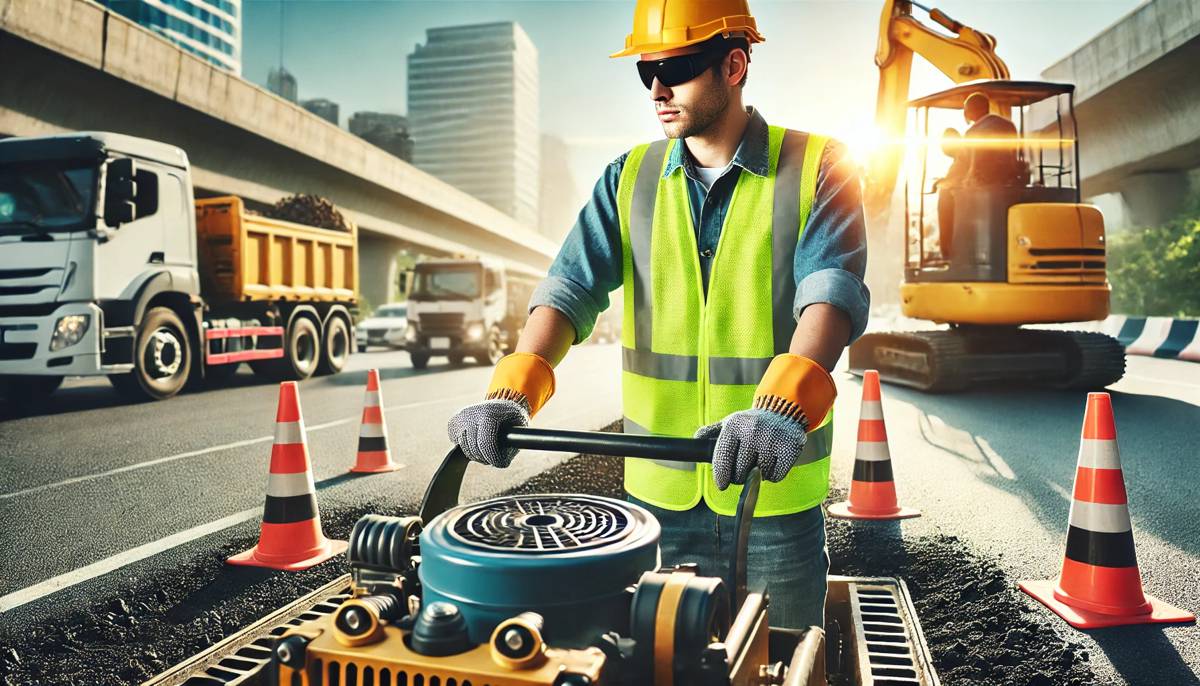
Types of Safety Eyewear
Selecting the right type of safety eyewear is a critical decision that hinges on understanding the specific hazards workers encounter in their environments. With various options available, each tailored for different risks, making the correct choice can significantly enhance safety and compliance. Here’s a detailed breakdown of common options, their features, and ideal applications:
Safety Glasses
- Features: Safety glasses are equipped with impact-resistant polycarbonate lenses and often include side shields to protect against peripheral hazards. They are lightweight and designed for everyday tasks, offering basic protection without compromising comfort or visibility.
- Ideal For: Flying debris, dust, and general construction activities where the risk of high-speed particles is present but not extreme.
- Example: Advanced safety glasses with anti-scratch coatings and UV protection, suitable for both indoor and outdoor use.
- Additional Benefits: Many safety glasses now feature anti-glare and photochromic lenses that adjust to changing light conditions, making them ideal for workers transitioning between indoor and outdoor settings.
Goggles
- Features: Goggles provide a secure, tight seal around the eyes, shielding them from all directions. They often come with anti-fog coatings and ventilation systems to maintain clear vision during prolonged use.
- Ideal For: Environments with high exposure to chemical splashes, fine particles, or intense dust, such as laboratories or areas where chemical handling occurs.
- Example: Ventilated goggles with double-layered anti-fog technology and compatibility with prescription lenses.
- Additional Benefits: Certain models offer enhanced peripheral vision, ensuring workers maintain awareness of their surroundings while staying protected.
Face Shields
- Features: Face shields deliver broad coverage, protecting not just the eyes but the entire face from potential hazards. They are typically constructed from durable, impact-resistant materials and are designed to be used in conjunction with safety glasses or goggles for complete protection.
- Ideal For: High-risk tasks involving large particles, heat, or chemical splashes, such as grinding, cutting, or working with molten materials.
- Example: Adjustable face shields with flip-up visors and anti-scratch coatings, commonly used in metalworking or forestry.
- Additional Benefits: Advanced designs now include integrated headgear and detachable visors, offering added convenience and adaptability.
Welding Eyewear
- Features: Welding eyewear, including helmets, goggles, and shields, incorporates specialised filters that block harmful UV and infrared radiation. Auto-darkening filters adjust instantly to varying light intensities, offering seamless protection.
- Ideal For: Welding, cutting, brazing, and other tasks involving exposure to intense light and heat.
- Example: Welding helmets with auto-darkening technology and adjustable shade levels to suit different welding techniques.
- Additional Benefits: Some helmets now include built-in respiratory protection, safeguarding workers from fumes and particulate matter.
Laser Safety Glasses
- Features: These glasses are engineered with lenses that filter specific laser wavelengths, providing precise protection against direct or scattered laser exposure.
- Ideal For: Laser-focused tasks in medical, manufacturing, or research settings.
- Example: Laser safety glasses with customisable filters to accommodate various laser applications.
- Additional Benefits: Enhanced comfort features, such as adjustable frames and padded nose bridges, improve wearability during extended periods of use.
Prescription Safety Glasses
- Features: Prescription safety glasses combine corrective lenses with impact-resistant frames, ensuring workers with vision impairments do not compromise safety for clarity.
- Ideal For: Workers who require vision correction while engaging in tasks with moderate to high-risk hazards.
- Example: Durable prescription safety glasses with side shields, available in various frame styles to suit individual preferences.
- Additional Benefits: Modern options allow for seamless integration of progressive lenses or bifocals, eliminating the need for multiple pairs of glasses.
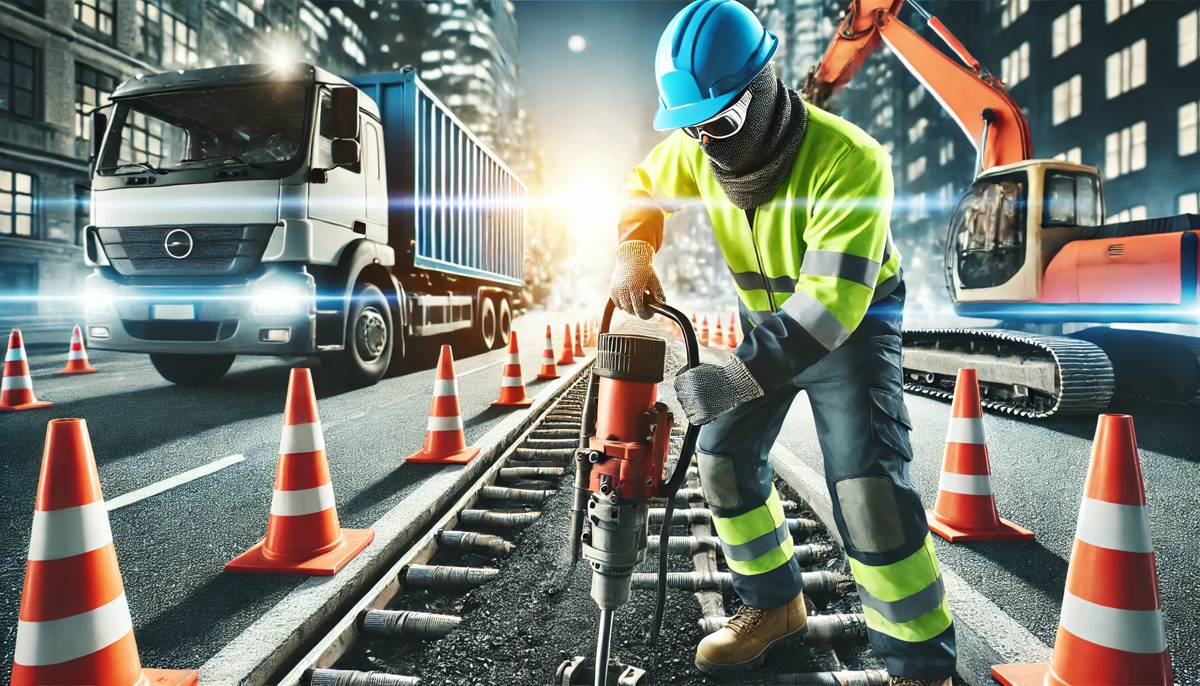
Standards and Certifications for Safety Eyewear
Compliance with safety standards ensures that safety eyewear performs as intended, providing reliable protection against workplace hazards. These certifications are essential for both regulatory compliance and worker safety, and understanding them can help employers make informed decisions about the protective equipment they provide.
Here are the key certifications to consider, along with expanded insights into their significance and applications:
ANSI Z87.1 (USA)
- Scope: Covers crucial aspects such as impact resistance, optical clarity, and UV protection. This standard is widely recognised in the United States and applies to a variety of industrial settings where eye hazards are prevalent.
- Markings: Products certified under this standard must display the manufacturer’s identification and “Z87” on the frames, ensuring traceability and verification.
- Applications: Designed for industries including construction, manufacturing, and healthcare, ANSI Z87.1 ensures that eyewear can withstand high-velocity impacts and filter harmful UV rays effectively.
- Extended Features: Recent updates to the standard now include provisions for anti-fog performance and testing for chemical splash resistance, reflecting modern workplace needs.
EN 166 (Europe)
- Scope: A comprehensive European standard ensuring durability and resistance against chemical, mechanical, and thermal risks. It also evaluates the optical quality of the lenses to prevent vision distortion during use.
- Markings: Certifications under EN 166 include detailed markings indicating the level of UV and infrared protection, as well as specific resistance to hazards like molten metal or high-speed particles.
- Applications: Used across diverse industries in Europe, from laboratories to heavy industry. The versatility of this standard ensures broad applicability.
- Special Considerations: The standard also covers anti-scratch coatings and fog resistance, both of which are critical for workers in environments with variable temperatures or high humidity.
CSA Z94.3 (Canada)
- Scope: Similar to ANSI Z87.1, but adapted to Canadian workplace conditions, this standard focuses on impact resistance, radiation protection, and splash resistance, ensuring a robust level of safety.
- Markings: CSA-certified products bear the CSA symbol, assuring workers and employers that the eyewear has undergone rigorous testing for Canadian industry requirements.
- Applications: Particularly relevant for workers in harsh environments such as oil and gas or forestry industries, where unique challenges demand high-performance protective equipment.
- Additional Notes: This standard also incorporates ergonomic considerations, such as comfort and fit, encouraging consistent use among workers.
AS/NZS 1337.1 (Australia/New Zealand)
- Scope: Focuses on the impact resistance and optical clarity of non-prescription safety eyewear, making it an essential standard for workplaces in Australia and New Zealand.
- Markings: Products compliant with AS/NZS 1337.1 feature clear labels indicating their adherence to the standard’s stringent requirements.
- Applications: Commonly used in mining, construction, and agricultural industries where risks from high-speed particles and UV exposure are prevalent.
- Innovations: Recent iterations of this standard include guidelines for tinted lenses and UV protection, catering to outdoor workers exposed to harsh sunlight.
By understanding these certifications, employers and workers can ensure that the eyewear they select meets the specific demands of their industry and work environment. Beyond compliance, investing in certified protective eyewear contributes to a safer and more efficient workplace, reducing the risk of accidents and fostering a proactive safety culture.
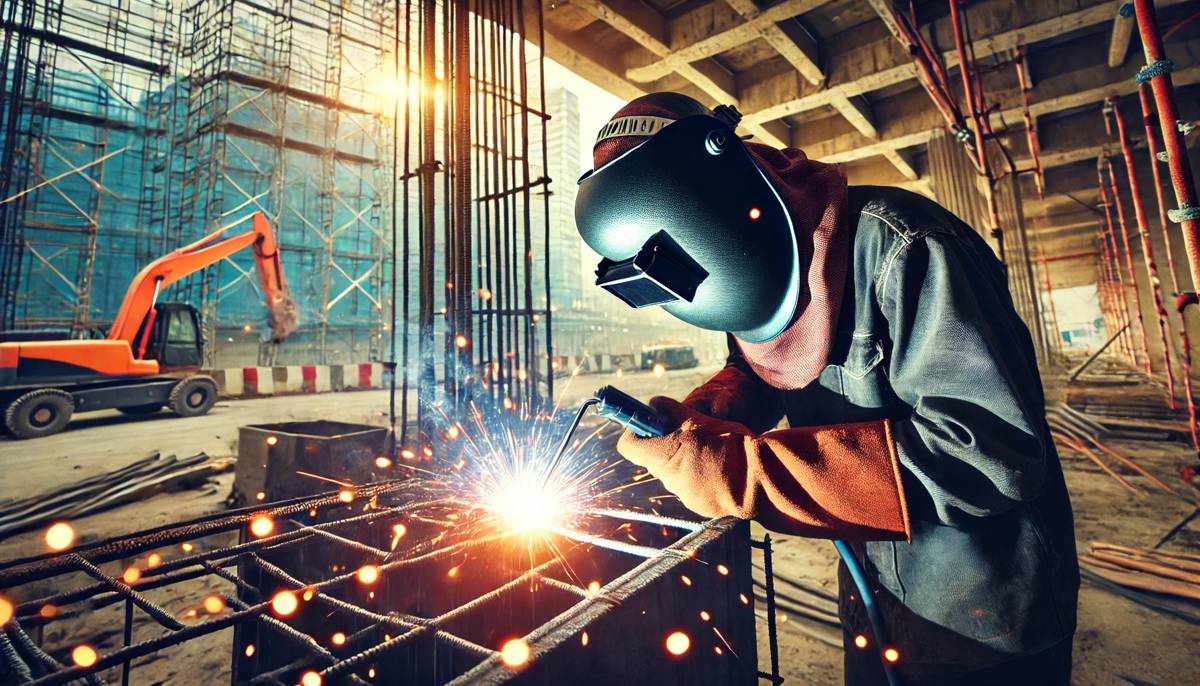
Common Myths About Safety Eyewear
Despite its importance, misconceptions persist, leading to preventable risks and non-compliance in workplaces:
- Myth 1: Ordinary eyeglasses suffice. Regular glasses may provide basic vision correction but lack the robust impact resistance required to protect against workplace hazards. Unlike certified safety eyewear, ordinary glasses can shatter upon impact, potentially exacerbating injuries instead of preventing them. Certified safety glasses undergo rigorous testing to withstand high-velocity projectiles and other hazards, offering a level of protection that regular eyewear cannot match.
- Myth 2: Safety eyewear is uncomfortable. Advances in design have transformed safety eyewear into lightweight, ergonomic options that prioritise both comfort and functionality. Modern frames are crafted from flexible materials with padded nose bridges and adjustable features, ensuring a snug fit for prolonged wear. Anti-fog coatings, ventilation systems, and scratch-resistant lenses further enhance usability, dispelling the outdated notion that protection comes at the cost of discomfort.
- Myth 3: One type fits all hazards. Each workplace hazard demands a specific type of safety eyewear. For instance, goggles with sealed edges are indispensable for chemical splash protection, while tinted or UV-filtering lenses are essential for outdoor tasks under harsh sunlight. Face shields offer comprehensive coverage in high-risk environments involving molten materials or intense heat. Tailored protection ensures that workers are equipped to handle their unique risks effectively, making a “one-size-fits-all” approach both impractical and unsafe.
Addressing these myths through education and clear communication can significantly enhance compliance, ensuring workers understand the critical role of proper safety eyewear in preventing injuries and fostering a culture of safety.
Emerging Trends in Safety Eyewear
Advancements in safety eyewear are driving significant improvements in both protection and usability, making them indispensable tools in modern construction environments. These innovations not only enhance performance but also ensure greater comfort and practicality for users, encouraging consistent adoption:
- Anti-Fog Coatings: Essential for humid or high-temperature environments, anti-fog coatings ensure clarity of vision even in challenging conditions. Modern coatings are more durable, withstanding repeated cleaning and exposure to extreme environments, making them invaluable for tasks requiring precision and focus.
- Scratch Resistance: Scratch-resistant lenses are a game-changer for improving the longevity of safety eyewear. This feature is particularly important in rugged workplaces where tools, dust, or debris could easily damage unprotected lenses. Enhanced coatings now provide double the resistance compared to earlier iterations, reducing maintenance costs and the need for frequent replacements.
- UV Protection: Prolonged outdoor exposure can lead to significant eye strain and long-term damage. Safety eyewear with advanced UV protection offers shielding against harmful rays, with some designs incorporating photochromic lenses that adjust to varying light conditions. This adaptability ensures optimal visibility and protection in fluctuating environments, such as construction sites transitioning from indoor to outdoor tasks.
- Smart Glasses: A breakthrough in wearable technology, smart glasses integrate heads-up displays for real-time data, streamlining workflows and enhancing situational awareness. These advanced devices provide hands-free access to blueprints, safety alerts, or site analytics, empowering workers to make informed decisions without compromising safety. Newer models also include voice control and augmented reality features, expanding their utility across various construction scenarios.
EN ISO 16321-1:2022: A New Era in Eye Protection
The updated EN ISO 16321-1:2022 standard, effective November 2024, introduces a comprehensive overhaul to safety eyewear regulations, aiming to enhance both usability and protection across industries:
- Expanded Fit: With the inclusion of six headforms, this standard now accommodates 95% of the global population, offering improved fit and comfort for a diverse workforce. This expansion eliminates the one-size-fits-all approach and ensures that safety eyewear is not only effective but also comfortable for extended wear. Employers can now select eyewear that caters to a broader range of facial structures, reducing complaints and increasing compliance.
- Impact Levels: Three new impact categories (C, D, E) have been introduced, each corresponding to specific velocity and force levels to address a wider variety of workplace risks. For example, category C is designed for high-speed particle impacts, while D and E provide tailored protection for environments with lower but sustained impact risks. These distinctions allow safety officers to choose eyewear that precisely matches the hazards of specific tasks, enhancing overall safety outcomes.
- Updated Markings: The new standard introduces clearer, more detailed labels for UV protection, signal light detection, and additional optical features. This simplifies the selection process, making it easier for workers and safety officers to identify the right eyewear for their needs. For instance, UV markings now indicate not only the level of protection but also the suitability for prolonged outdoor exposure, while new codes for signal light detection improve safety in environments with critical colour differentiation requirements, such as traffic management or aviation.
By addressing these critical areas, EN ISO 16321-1:2022 sets a new benchmark for safety eyewear, ensuring better fit, more precise protection, and greater clarity in product information. Employers and workers alike will benefit from these advancements, which promise to improve safety outcomes and workplace satisfaction across various industries.
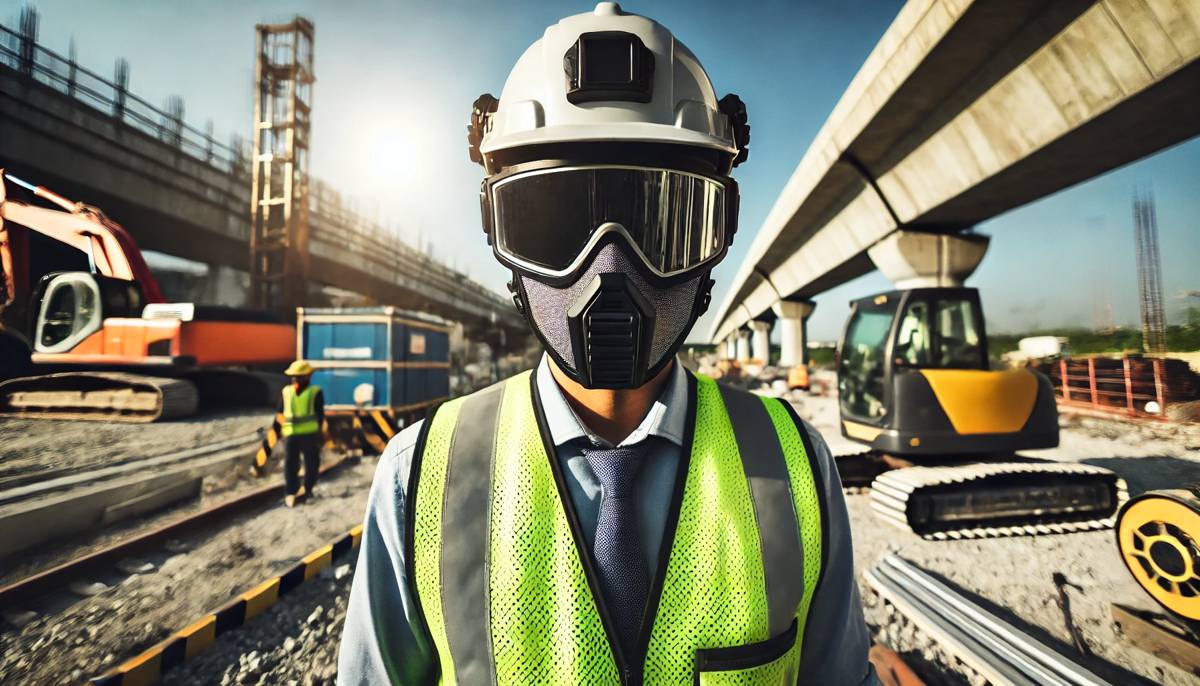
Best Practices for Selecting Safety Eyewear
Choosing the right eyewear involves several crucial steps to ensure workers are adequately protected while maintaining comfort and functionality throughout their tasks. Each step must be tailored to the specific needs of the environment and the nature of the work being performed:
- Hazard Assessment: Conduct a comprehensive analysis of the workplace to identify potential risks. This includes evaluating physical dangers like flying debris and dust, chemical hazards such as splashes and vapours, and environmental factors like UV exposure and wind. Regular updates to these assessments are essential as workplace conditions evolve, ensuring protection measures remain effective.
- Compliance: Verify that the selected eyewear meets or exceeds recognised safety standards, such as ANSI Z87.1, EN 166, or other regional certifications. These standards guarantee that the eyewear has been rigorously tested for impact resistance, optical clarity, and additional features tailored to specific hazards. Choose products with visible certifications to ensure easy identification and compliance during safety audits.
- Fit and Comfort: Ensure the eyewear fits snugly without causing discomfort. Look for features such as adjustable frames, padded nose bridges, and lightweight materials to encourage prolonged use. Poorly fitting eyewear can lead to reduced visibility, frequent adjustments, and non-compliance, all of which compromise safety. Providing multiple size options accommodates diverse facial structures and enhances overall usability.
- Special Features: Evaluate the need for advanced functionalities like anti-fog coatings to maintain clarity in humid environments, UV protection for outdoor tasks, and scratch resistance for durability in abrasive settings. For roles requiring frequent transitions between lighting conditions, consider eyewear with photochromic lenses or tinted options to enhance adaptability. Investing in these features not only boosts safety but also improves worker satisfaction and productivity.
Implementing a Culture of Safety
Encouraging consistent use of safety eyewear requires a multifaceted approach that addresses both practical and psychological factors to ensure long-term compliance:
- Training: Comprehensive training sessions are essential to educate workers about the specific risks they face and the role of safety eyewear in mitigating those risks. This includes hands-on demonstrations of proper usage, adjustments, and the consequences of neglecting protective measures. Tailored training modules for different roles within the organisation can ensure that the message resonates with all employees, from site workers to supervisory staff.
- Maintenance: Regularly inspecting and maintaining safety eyewear is critical to ensure its effectiveness. This involves establishing a routine schedule for checking lenses for scratches, frames for damage, and coatings for wear. Workers should be taught how to clean and store their eyewear properly to extend its lifespan. Employers should also provide clear guidelines for when and how to request replacements, ensuring that damaged or outdated PPE is promptly swapped out.
- Involvement: Actively involving employees in the selection process fosters a sense of ownership and increases the likelihood of compliance. Workers who feel that their preferences are considered—whether for comfort, fit, or additional features—are more likely to wear their safety eyewear consistently. Offering a variety of models and sizes, along with the opportunity to provide feedback, ensures that PPE not only meets safety standards but also aligns with user needs and expectations.
- Recognition and Incentives: Implementing recognition programmes that reward employees for consistent use of safety eyewear can reinforce positive behaviour. Incentives such as safety awards or team-based competitions can make compliance more engaging, shifting the narrative from obligation to collaboration. By celebrating milestones like injury-free months, organisations can further embed a culture of safety within the workplace.
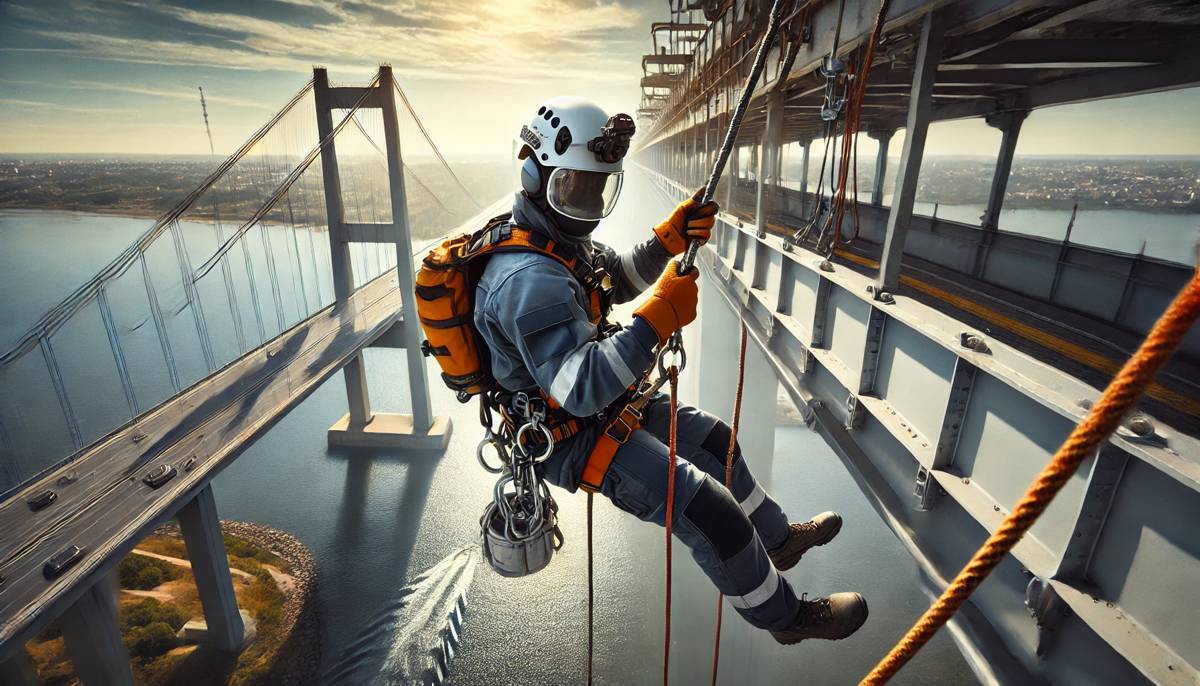
Building a Safer Future
Safety eyewear is far more than just a regulatory requirement; it is an essential pillar of workplace safety and a critical investment in the well-being of employees. Every day, countless workers face hazards that could jeopardise their vision, from flying debris and chemical splashes to prolonged exposure to harmful UV rays. Without the proper protection, these risks can result in life-altering injuries, impacting not only the individual but also workplace productivity and morale.
By prioritising the use of high-quality, well-fitted, and appropriately certified safety eyewear, employers create a proactive safety culture that places a premium on prevention over reaction. The benefits extend beyond compliance with legal standards; they include tangible reductions in workplace injuries, improved employee confidence, and a boost in overall operational efficiency.
Moreover, advancements in safety eyewear technology have made it easier than ever to provide comprehensive protection without compromising comfort or functionality. Features such as anti-fog coatings, lightweight materials, and adjustable frames ensure that workers remain both protected and comfortable throughout their tasks. Customisable options, such as prescription safety glasses or photochromic lenses, further enhance usability, catering to the diverse needs of the workforce.
Let’s make eye safety a clear priority across industries by recognising the invaluable role of vision in every aspect of life and work. By embracing innovation, educating employees, and embedding safety into everyday practices, organisations can ensure that their workforce remains protected, productive, and empowered.
